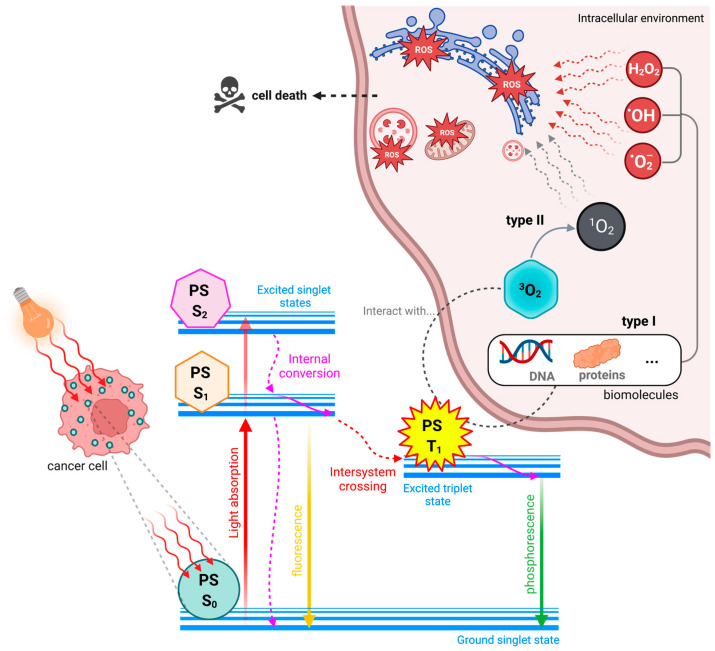Figure 3.
Photodynamic therapy-customized Perrin–Jablonski energy diagram. After cellular uptake of the photosensitizer (PS) and irradiation with light emitting a specific wavelength, this radiation is absorbed by the PS in the ground state (PS S0), which transitions to the first or second excited singlet state (PS S1 and PS S2, respectively). Variations between PS S1 and PS S2 or between the various energy levels of the same state occur by internal conversion. Radiative (fluorescence and consequent return to S0) or nonradiative (intersystem crossing to the PS T1) processes can occur in the PS S1. The PS T1 can interact with biological substrates, forming reactive oxygen species (ROS), such as hydrogen peroxide (H2O2), hydroxyl radical (•OH), or superoxide anion (•O2−), by type I reactions, or singlet oxygen (1O2) by type II reactions. In high concentrations, these ROS led to cell damage in essential structures for normal cell functioning, culminating in cell death.

